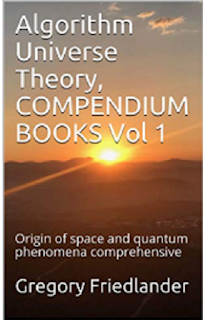With publication imminent and only one hurdle to cross (apparently) I was forced to take a chance where a little insight would have been very welcome. whether I called it right on my own remains to be seen.
I did not feel like I had the right to ask for help and there is some deadline.
The paper will be slightly out of date, mainly lacking the important theory on hinge states and antimatter which appear in the last post and some of the math details and diagrams which only appear in Vol 2.
The paper, while far from perfect, as a book review of the larger two volume set it is wildly incomplete on the theory, sets out all of the fundamental work in around 40 pages.
A 10 or 20 page update may come eventually with those semi-critical parts, but only after I have a chance to read through the hard copies of books vol 1and2 will anything comprehensive be added to what is, necessarily only the basics.
This post was supposed to be fairly mundane, a complaint about being alone which i deserve of course, a note about not being able to swim yesterday because of inclement weather and a less than satisfying bike ride, but the truth is the disclosure which follows is important if not new to the theory and changes completely at least possibly, the wave particle analysis of ct3. read on if you dare.
Volume 2 turns out to be pretty full and important, as was suggested in the prior post. Some of the gems like the one below are just interesting, but the book covers the hinge state phenomena in conjunction with antimatter observations as well as the creation of dimension in detail and for the first time.
It is significant enough that given time I would incorporate much of what is in Vol 2 into the summary. Volume II is live in Kindle and should be live as a print book in a day or two.
There first 100 and last 50 pages are edited fairly concisely. The middle 166 pages (pp 100-266) need some work, but these mainly deal with comparisons to the AuT rejected Standard Model and a few other interesting historical precedents and while an interesting and important area of the study, given the weight applicable to Algorithm Universe theory any reference to the standard model or the higgs model is largely as waste of time except as mathematical exercises. That is there are literally thousands of physicists trying to make the standard model make sense and only me trying to make this make sense.
Weighing in at 318 pages more or less it is much easier to live with than the poorly executed 790 page behemoth from which it was edited and is, more or less, ready to order.
The summary is a whittled down version designed to present just enough of the theory to follow in around 50 pages.
Volume 1 is available in Print and E-bood version.
Volume 2 includes a discussion of our perspective showing how light, time and dimension interact using the diagram below.
The first figure shows the perspective of the visible light spectrum. One interest feature which AuT suggests is that quantum light and wave light are different from photonic light.
Photonic light, that concept of ct2 which is responsible for electromagnetic effects and neutrino type effects is invisible to us.
What we apparently see in the wave particle duality sense might be a form of light that is quantum, an individual state of ct3.
What we see when we look at waves, is actually light being loaded on the ct4 information arms, a third dimension being added to the quantum light just as molecules are the beginnings of ct5 arm loading.
AuT opens doors that have been sealed to us by our perspective since the beginning of time and are only now being opened for our investigation.
The illusion of having these
folds where you travel within them instead of a pure straightening from one
fold to unfolded and back gives the dimensional impression that you have
“slowed down" a wave when its movement is the same speed, but within a
folded area. This is easily viewed from
the observer’s point of view using the bus analogy. People can run back and forth in a bus, but
the observer of the bus see it as standing still. This is the difference between ct1 states
that have been folded into a higher dimensional bus as seen based on lower
dimensional points of view reflecting on just the outside of the bus:
A
shows the view over changes in x of a single ct3 quantum wave.
The
various carrier states of ct4 (the neutron) vary between 10 and 1x10^16 of
these. When the eye views these, the
changes in photons (B) the waves become distorted not by their rate of change,
but by how they are hidden in bundles.
At
the molecular state (C) even these wave bundles of 10^16 are see in bundles
from 16 on up. The movement of space is
hidden in the “ct2 bus,” individual photons are hidden in the ct3 matrix, ct3
further hidden in the ct4 matrix all the way up to the inviable ct4
compression. Hence, from the viewpoint
of four dimensions, they are slowed down even when they all move at the same
speed but within the matrix.





No comments:
Post a Comment